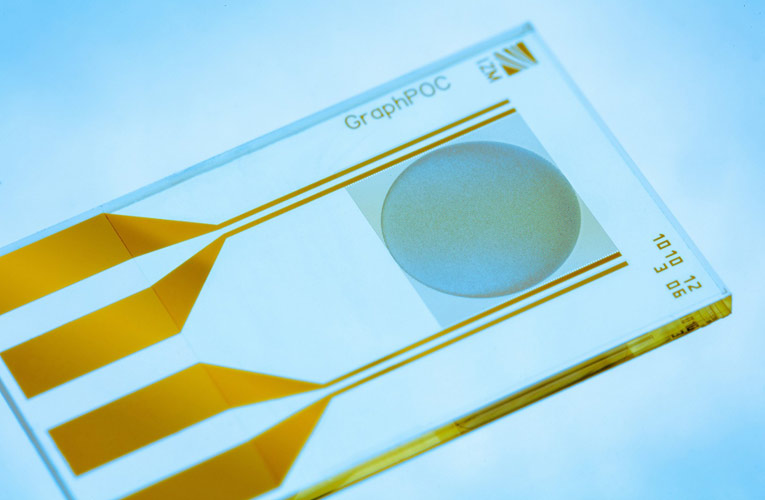
With COVID-19 pandemic spreading at such a vast scale, early and accurate detection of infections has become quite important. Recently, researchers at the Fraunhofer Institute for Reliability and Micro integration IZM along with the partners in industry and healthcare have developed graphene oxide-based sensor platform for detecting acute infections like sepsis or the antibodies against coronavirus in just a few minutes.
The team has been working on the project Graph-POC for the last two years to address the difficulties faced in the diagnosis of infections. The researchers are now focusing on making it helpful in identifying early infections caused by the COVID-19 virus to help in the attempts to trace the mode of spread of the infection.
When an infection occurs, the human body forms biomarkers (proteins or molecules) as a response. Molecules placed on the graphene-based sensor’s surface could help detect these biomarkers. The occurrence of infection can be determined through differential measurements of the concentration of the biomarkers. The graphene oxide is not just biocompatible and electrically conductive but highly reliable for the detection of infection.
Until now, graphene oxide has been used in its original form (2D monolayer) only in microelectronics. The Fraunhofer IZM team is now using it in a 3D structure in the form of flakes to improve the measuring surface and ensure the accuracy of measurements. Besides, this will pave the way for further applications like sensing harmful gases like acetone or carbon monoxide at ambient temperature.
The process is quite simple! All it takes is a single drop of blood/saliva to perform an accurate analysis. A few minutes after applying the drop to the surface of the sensor, the test result is conveyed as electrical signals to the family doctor’s office. Substituting the protracted blood work in the lab takes around 15 minutes, thereby eliminating the guesswork and error out of diagnosis, enabling the physician to prescribe the suitable treatment or appropriate antibiotics. Additionally, the test could be configured to identify antibodies that exist even after a patient recovers from an infection.
Additionally, the team is working on addressing another challenge of scaling up the production process to enable mass manufacturing. They are seeking to use the graphene oxide coating at the wafer level to ensure the processing of hundreds of chips can take place simultaneously. The original project to identify infections has been scheduled to work until spring 2021, but the researchers predict that the sensor cannot be verified for the coronavirus for another year.

